#iotapplication
Explore tagged Tumblr posts
Text
Several features of React say to choose React.js for IoT. Let's see too special about React.js which makes it a smart choice for IoT projects.
#React#ethics first#habilelabs#reacthooks#reactfunction#reactjs#reactnative#IoT#IoTdevice#IoTapplication
0 notes
Text
The future of custom software development is critical for businesses aiming to thrive in a rapidly evolving digital landscape. Staying ahead means adopting smarter, scalable, and secure solutions that align with global demands.
Custom software empowers businesses to innovate, streamline operations, and meet customer expectations effectively.
At Kody Technolab, we specialize in crafting tailored solutions that ensure your business stays competitive and future-ready.
Let’s work together to unlock your potential. Learn more:
#CustomSoftwareDevelopment#SoftwareTrends2025#TechLeaders#DigitalTransformation#AIInSoftwareDevelopment#InnovativeTechnologies#CloudSolutions#AgileDevelopment#DevOpsPractices#LowCodeRevolution#IoTApplications#BlockchainTechnology#CybersecurityExperts#UXUIDesign#FutureOfTech#SustainableSoftware#AIForBusiness#DataDrivenInsights#EnterpriseSolutions#TechEntrepreneurs
0 notes
Text
youtube
IoT Applications and Developments in the Agriculture and Healthcare Industries
0 notes
Text
The future of IoT will transform industries with enhanced connectivity, smart automation, data-driven insights, evolving everyday life and boosting efficiency.
#best college of engineering in trichy#best autonomous college of engineering in trichy#krce the top engineering college in trichy#top college of engineering in trichy#InternetofThings#IoTInnovations#IoTTrends#SmartDevices#ConnectedTechnology#IoTSecurity#IoTApplications
0 notes
Text
Discover the transformative applications of the Internet of Things (IoT) across industries such as healthcare, agriculture, manufacturing, and smart cities. Learn how IoT is improving efficiency, safety, and convenience.
0 notes
Text
#SupplyChainTechnology#DigitalTransformation#LogisticsOptimization#AIinSupplyChain#IoTApplications#BlockchainInSCM#InventoryManagement#CloudComputing
0 notes
Text
Which of the Following Is a Key Challenge in Implementing IoT Systems?
Unlock the power of Implementing IoT Systems with our cutting-edge solutions. From smart homes to industrial automation, we've got you covered. Transform your operations, enhance efficiency, and unlock new possibilities with our IoT Development Company.

#IoTDevelopment#IoTSolutions#SmartTechnology#Innovation#DigitalTransformation#IoTApplications#appdevelopmentcompany#iotappcompany
0 notes
Text
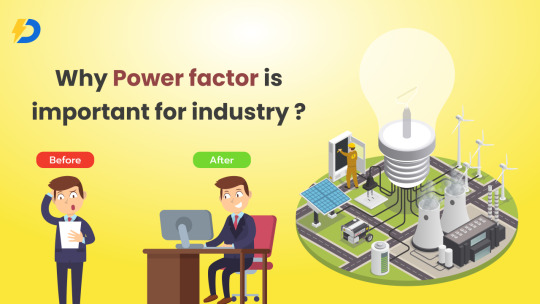
What are the most effective methods for managing power factor in your system?
`What's Power Factor?
In an energy management system, the power factor gauges the efficiency of electrical power usage. It is defined as the ratio of real power to apparent power (the total power supplied). A high power factor signifies efficient use of electrical power, which minimizes energy losses and enhances system performance.
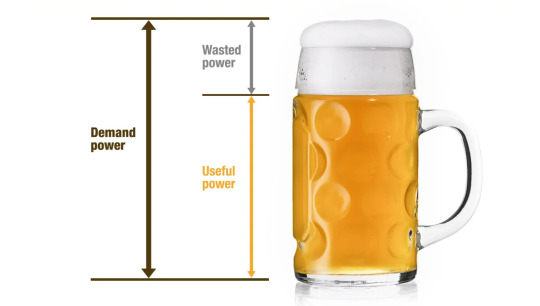
Beer is active power (kW)—the useful power, or the liquid beer, is the energy that is doing work. This is the part you want.
Foam is reactive power (kVAR)—the foam is wasted power or lost power. It’s the energy being produced that isn't doing any work, such as the production of heat or vibration.
The mug is apparent power (kVA)—the mug is the demand power, or the power being delivered by the utility.
Understanding Low Power Factor?
A low power factor is primarily caused by inductive loads, including motors, transformers, and lighting ballasts, which draw reactive power. This reactive power is essential for generating and sustaining magnetic fields but does not contribute to useful work, increasing apparent power and consequently lowering the power factor. Moreover, harmonics from nonlinear loads, such as electronic devices and variable frequency drives, further reduce the power factor by introducing additional reactive power.
Benefits of High Power Factor
A high power factor decreases the apparent power and current drawn from the source, which can lower energy bills as some utilities impose charges for low power factor or provide incentives for maintaining a high power factor. It enhances voltage regulation and stability, increases system capacity and efficiency by reducing losses and heating, and lessens the effects of harmonics, thereby improving overall power quality.Benefits of Power Factor

Measuring Power Factor
Power factor is measured using a power meter or analyzer that monitors real, reactive, and apparent power, or with a power factor meter for direct readings. Measurements should be taken at various points in the system and at different times to account for load variations.
Correcting Low Power Factor
The most effective way to correct a low power factor is by installing power factor correction devices such as capacitors or synchronous condensers. These devices provide reactive power locally, reducing the flow of reactive power and improving the power factor. Depending on the load characteristics and desired power factor levels, they can be installed centrally or near specific inductive loads.
Controlling Power Factor Correction Devices
Power factor controllers, which can be either manual or automatic, are used to manage correction devices. Manual controllers rely on human adjustments based on meter readings, whereas automatic controllers use sensors and microprocessors to adjust devices. Automatic controllers can also be programmed to optimize performance under varying load conditions.
Optimizing Power Factor Management
Optimizing power factor management requires balancing cost, performance, maintenance, and safety. Essential practices include regular evaluation and adjustment, proper maintenance to prevent overloading and overheating, and compliance with utility codes and standards. This comprehensive approach ensures improved efficiency, stability, and cost-effectiveness of your electrical system.
#SmartEnergy hashtag#Sustainability hashtag#RenewableEnergy hashtag#EnergyEfficiency hashtag#SmartMeterRevolution hashtag#Niraltek hashtag#NiraltekTeam hashtag#InternetOfThings hashtag#ESP32 hashtag#ESP32Development hashtag#ESP32Project hashtag#ConnectedDevices hashtag#IoTInnovation hashtag#IoTProject hashtag#IoTDevices hashtag#IoTSecurity hashtag#IoTApplications hashtag#IoTDevelopment hashtag#IoTTechnology hashtag#ESP32Electronics hashtag#ESP32Innovation hashtag#IIoTTechnology hashtag#IIoTInnovation hashtag#IndustrialIoT hashtag#EnergyUsage hashtag#IoT hashtag#SmartCities hashtag#SmartMeter hashtag#powerfactor
0 notes
Text
Identiv Launches Bitse.io 3.0 IoT Connecting Cloud With Advanced Supply Chain And Brand Protection Features
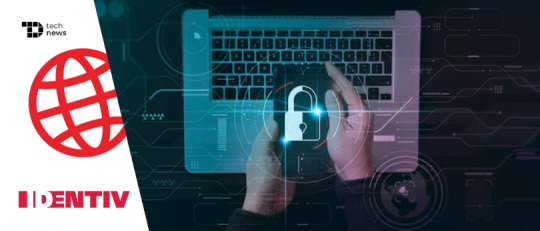
Identiv, Inc. introduces the latest version of its global IoT connecting cloud platform, bitse.io 3.0, which is set to revolutionize supply chain management, brand protection, and customer engagement. This updated platform streamlines the deployment of cutting-edge IoT applications, allowing for swift market entry with state-of-the-art RFID and IoT technologies. By providing built-in support for encrypted and tamper-proof tags, industries like healthcare, retail, and logistics can seamlessly implement secure IoT solutions without the need for extra coding, ultimately saving time and costs. The new Supply Chain Insights feature offers in-depth analytics by seamlessly integrating with enterprise systems, aiding in compliance with upcoming regulations and supporting sustainability efforts.
Amir Khoshniyati, VP and GM of Identiv IoT, emphasizes that bitse.io 3.0 signifies a significant step forward in empowering businesses with innovative IoT solutions, speeding up time to revenue, and maintaining a competitive advantage.
bitse.io 3.0 is especially advantageous for brands seeking to boost consumer engagement, providing smooth content delivery and deeper insights into customer preferences for more impactful marketing campaigns and increased brand loyalty.
A trial run in the wine and spirits industry demonstrates the value of bitse.io 3.0, where a prominent producer successfully deploys the platform for product authentication and traceability while offering an immersive virtual experience to enhance customer loyalty. The platform's enhanced functionalities offer real-time visibility and advanced traceability, making it an ideal solution for sectors such as healthcare, pharmaceuticals, medical devices, smart packaging, specialty retail, and industrial applications.
To witness bitse.io in action, interested parties can complete a form or reach out to [email protected].
Read More - https://www.techdogs.com/tech-news/business-wire/identiv-launches-bitseio-30-iot-connecting-cloud-with-advanced-supply-chain-and-brand-protection-features
#Identiv#NetworkSecurity#SecuritySolutions#Authentication#RadioFrequencyIdentification(RFID)#IoTApplications#SupplyChainManagement
0 notes
Text
Industrial IoT: Transforming Manufacturing through Connected Intelligence

The convergence of industrial processes with cutting-edge technology has given rise to the Industrial Internet of Things (IIoT), revolutionizing the landscape of manufacturing and industrial operations. This comprehensive exploration delves into the intricacies of Industrial IoT, examining its definition, key components, applications, benefits, and the transformative impact it has on optimizing efficiency, enabling predictive maintenance, and ushering in a new era of connected intelligence within the industrial sector.
Defining Industrial IoT
1. Overview of Industrial IoT
The Industrial Internet of Things (IIoT), also known as Industrial IoT, refers to the integration of internet-connected devices, sensors, and smart technologies into industrial and manufacturing processes. It leverages data analytics, machine learning, and real-time connectivity to enhance operational efficiency, monitor equipment health, and enable intelligent decision-making in industrial settings.
2. Key Components of Industrial IoT:

Sensors and Actuators: These devices capture real-time data from industrial equipment and processes, providing valuable insights into performance, conditions, and anomalies.
Connectivity Solutions: IIoT relies on robust communication protocols and networks to ensure seamless connectivity between devices and systems, enabling data transmission and analysis.
Edge Computing: Edge computing processes data locally near the source, reducing latency and enabling quick decision-making without relying solely on centralized cloud servers.
Cloud Platforms: Cloud-based platforms store and analyze vast amounts of data generated by IIoT devices, offering scalable and accessible solutions for data storage, analytics, and management.
Analytics and Machine Learning: Advanced analytics and machine learning algorithms interpret the collected data, providing actionable insights, predictive maintenance predictions, and optimization recommendations.
Applications of Industrial IoT
1. Predictive Maintenance
IIoT enables predictive maintenance by continuously monitoring equipment conditions. By analyzing data from sensors, manufacturers can predict when machinery is likely to fail, allowing for proactive maintenance and minimizing downtime.
2. Asset Tracking and Management
Tracking the location and status of assets within a manufacturing facility becomes efficient with IIoT. RFID tags and sensors provide real-time visibility, optimizing inventory management and reducing the risk of asset misplacement.
3. Supply Chain Optimization
IIoT facilitates end-to-end visibility in the supply chain. From raw material sourcing to product delivery, manufacturers can track and optimize each step, reducing lead times, minimizing disruptions, and improving overall supply chain efficiency.
4. Energy Management
Smart sensors and meters integrated with IIoT systems help monitor energy consumption in real time. Manufacturers can identify energy inefficiencies, implement energy-saving measures, and reduce operational costs.
5. Quality Control and Monitoring
IIoT enhances quality control by continuously monitoring production processes. Real-time data analysis ensures that products meet quality standards, reducing defects, and improving overall product quality.
6. Worker Safety and Health
Wearable devices equipped with IIoT capabilities enhance worker safety by monitoring environmental conditions, detecting potential hazards, and providing real-time alerts. This contributes to a safer working environment.
Benefits of Industrial IoT
1. Improved Operational Efficiency
IIoT optimizes operational processes by providing real-time insights into equipment performance, production efficiency, and resource utilization. This leads to streamlined operations, reduced waste, and increased overall efficiency.
2. Cost Reduction
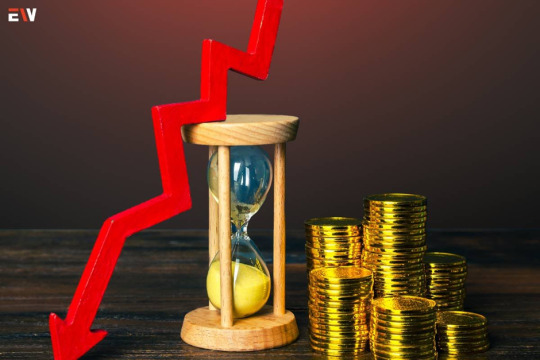
Predictive maintenance, energy optimization, and efficient resource management enabled by IIoT contribute to significant cost reductions. Manufacturers can minimize downtime, extend equipment lifespan, and make informed decisions to optimize spending.
3. Enhanced Productivity
IIoT empowers manufacturers to make data-driven decisions that positively impact productivity. Automation, real-time monitoring, and predictive analytics contribute to smoother production processes and higher output.
4. Strategic Decision-Making
The data generated by IIoT devices provides valuable insights for strategic decision-making. Manufacturers can make informed choices regarding production schedules, resource allocation, and overall business strategies.
5. Innovation and Agility
The adoption of IIoT fosters innovation within the industrial sector. Companies that embrace connected technologies can quickly adapt to changing market demands, introduce new products, and stay ahead of the competition.
6. Customer Satisfaction
By optimizing production processes, ensuring product quality, and minimizing delays, IIoT contributes to higher customer satisfaction. Timely delivery of high-quality products enhances the reputation of manufacturers in the market.
Challenges and Considerations in Industrial IoT Implementation
1. Security Concerns
The interconnected nature of IIoT devices raises cybersecurity concerns. Safeguarding sensitive data, protecting against cyber threats, and ensuring secure communication between devices are critical considerations.
2. Interoperability Issues
Compatibility between different IIoT devices and systems can be a challenge. Establishing industry standards and protocols is essential to ensure seamless integration and interoperability.
3. Data Privacy and Compliance
With the vast amount of data generated by IIoT, ensuring compliance with data privacy regulations and standards is crucial. Manufacturers must implement robust data governance practices to protect customer and operational data.
4. Initial Investment Costs
The upfront costs associated with implementing IIoT infrastructure, including sensors, connectivity solutions, and analytics platforms, can be a barrier for some organizations. However, the long-term benefits often outweigh the initial investment.
Future Trends in Industrial IoT
1. 5G Integration
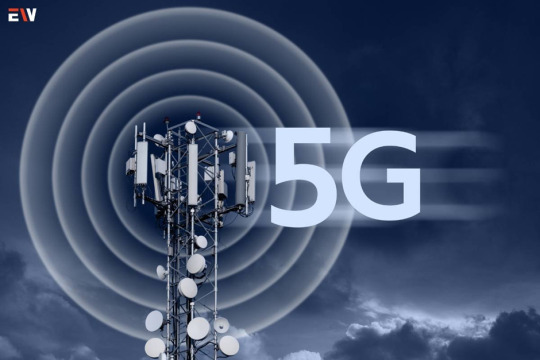
The rollout of 5G networks will enhance connectivity and enable faster data transmission for IIoT devices. This will further improve real-time monitoring, decision-making, and overall efficiency in industrial settings.
2. Edge Computing Advancements
Continued advancements in edge computing technologies will enable more processing capabilities at the device level. This reduces reliance on centralized cloud servers and enhances the speed of data analysis for critical applications.
3. AI and Machine Learning Integration
The integration of artificial intelligence (AI) and machine learning (ML) with IIoT will enable more advanced predictive analytics, anomaly detection, and optimization capabilities, further enhancing the intelligence of industrial processes.
4. Digital Twins for Simulation
The use of digital twins – virtual replicas of physical assets or systems – will become more prevalent. Manufacturers can simulate and analyze the behavior of assets in a virtual environment before implementing changes in the physical world.
Conclusion
The Industrial Internet of Things stands at the forefront of a transformative wave, reshaping the manufacturing and industrial landscape. As organizations continue to embrace connected intelligence, the benefits of IIoT in terms of efficiency, productivity, and innovation become increasingly evident. While challenges such as security and interoperability must be addressed, the potential for optimized operations, predictive maintenance, and enhanced decision-making positions IIoT as a cornerstone of the fourth industrial revolution. The ongoing evolution of IIoT promises not only to connect machines but also to empower industries with the intelligence needed to thrive in an ever-evolving, interconnected world.
Read More: Smart Manufacturing: A Revolution in Industry 4.0
#IIoT#industrialiot#connectedintelligence#manufacturing#predictivemaintenance#iotapplications#SmartManufacturing
0 notes
Text

Which of the following is a commonly used IoT development platform for building applications and managing devices?
A) Arduino B) Raspberry Pi C) Microsoft Azure IoT D) TensorFlow
#IoT#IoTquiz#IoTdevelopmentoll#IoTdevelopmentquiz#followme#followforfollow#instadaily#follow4follow#like4like#letsconnect#amigowayspoll#amigoways#IoTDevelopment#TechInnovation#SmartDevices#MicrosoftAzureIoT#ArduinoVsRaspberryPi#TensorFlowTech#ConnectedWorld#IoTApplications#IoTPlatforms#InnovationInTech
0 notes
Text

Unraveling the Internet of Things (IoT): A Connected Future
Defining the Internet of Things
At its core, the Internet of Things refers to the network of interconnected devices that communicate and share data with each other through the internet. These devices, equipped with sensors, actuators, and connectivity, gather and exchange information, creating a web of intelligent, data-driven systems. The range of IoT devices is vast, encompassing everyday objects, industrial machinery, vehicles, and more.
Key Components of IoT
1. Devices and Sensors:
IoT devices are equipped with sensors that collect data from the surrounding environment. These sensors can measure various parameters, such as temperature, humidity, motion, and more.
2. Connectivity:
Connectivity is the lifeblood of IoT. Devices use different communication protocols, including Wi-Fi, Bluetooth, Zigbee, and cellular networks, to transmit data to other devices or central servers.
3. Data Processing:
Collected data undergoes processing, either locally on the device or in the cloud. Edge computing, a decentralized approach to data processing, is gaining prominence in IoT applications.
4. Actuators:
Actuators enable devices to perform physical actions based on the data they receive. For example, a smart thermostat adjusting the temperature or a smart lock locking and unlocking a door.
5. IoT Platforms:
These platforms facilitate the management, monitoring, and analysis of IoT devices and data. They often provide tools for application development, device connectivity, and data visualization.
Applications of IoT
1. Smart Homes:
IoT has revolutionized home automation, allowing users to control lighting, thermostats, security cameras, and more through connected devices and mobile applications.
2. Healthcare:
In healthcare, IoT devices monitor patient health, track medications, and enable remote patient monitoring. This leads to improved diagnostics, personalized treatment plans, and enhanced patient care.
3. Industrial IoT (IIoT):
IIoT optimizes industrial processes by providing real-time data on equipment performance, predictive maintenance, and supply chain management. This results in increased efficiency and reduced downtime.
4. Smart Cities:
IoT technologies contribute to the development of smart cities by improving traffic management, waste management, energy consumption, and public safety.
5. Agriculture:
IoT is transforming agriculture through precision farming techniques. Sensors collect data on soil conditions, weather, and crop health, allowing farmers to make informed decisions for better yields.
6. Wearable Technology:
Fitness trackers, smartwatches, and other wearables leverage IoT to monitor physical activity, track health metrics, and provide personalized insights to users.
Challenges and Considerations
While IoT holds immense promise, it also presents challenges, including concerns about data privacy, security vulnerabilities, and the need for standardized protocols. As the IoT ecosystem continues to expand, addressing these challenges becomes paramount to ensuring the responsible and secure deployment of connected devices.
The Future of IoT
The evolution of IoT is an ongoing journey, marked by continuous innovation and integration into various aspects of our lives. As 5G networks roll out, offering faster and more reliable connectivity, and as edge computing gains prominence, the capabilities of IoT are poised to reach new heights. From smart cities to personalized healthcare, the Internet of Things is laying the foundation for a connected future, where the seamless exchange of information transforms the way we live, work, and interact with the world around us.
#magistersign#onlinetraining#IoT#InternetOfThings#ConnectedDevices#SmartTechnology#IoTApplications#SmartHomes#IIoT (Industrial Internet of Things)
0 notes
Text
Role of IoT Cloud Platforms in Shaping Industries: Data-driven Future
The global IoT cloud platform market size is anticipated to reach USD 51.3 billion by 2030, according to a new report by Grand View Research, Inc. The market is expected to expand at a CAGR of 14.6% from 2023 to 2030. The rapid adoption of internet of things (IoT) cloud platforms to connect hardware, such as sensors and smart devices to the cloud, to handle different communication protocols, and provide reliability, security, and authentication for users and devices is driving the IoT cloud platform market growth. In addition, the growing use of AI and ML integrated IoT platforms among organizations to reduce costs and maintain a competitive advantage is expected to boost the IoT cloud platform market growth.
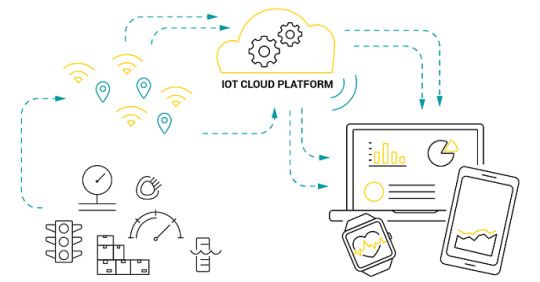
IoT Cloud Platform Market Report Highlights
By offering, the platform segment accounted for the major revenue share of 68.3% in 2022 and is anticipated to maintain its dominance over the forecast period. Increased adoption of IoT cloud platform as it helps to minimize risk and reduce development & operational costs are driving the segment growth. It also offers capabilities to help and analyze organizations to achieve business-critical needs with increased agility
The service segment is expected to witness the fastest growth rate of 15.5% during the forecast period. Growing demand for IoT cloud services such as training, consulting, integration, deployment, support, and maintenance services are boosting the segment’s growth
Commercial deployment segment held the largest market share of 47.3% in 2022 and is expected to retain its position over the forecast period. Increasing use of commercial cloud deployment model owing to its benefits such as high flexibility and scalability, easy deployment, and minimal maintenance costs is boosting the segment growth
Hybrid deployment segment is expected to grow at the fastest CAGR of 15.5% during the forecast period owing to its low cost and greater security and control over critical workloads
In terms of organization size, large-size organizations segment dominated the market and captured the largest revenue share of 67.3% in 2022. The increasing use of IoT cloud platforms by large enterprises from manufacturing, retail, smart city, transportation, and healthcare verticals to optimize and monitor their IoT business processes is attributed to segment growth
The small and medium sized organizations segment is expected to witness the fastest growth rate of 15.3% during the forecast period. Growing investments in the adoption of new and advanced technologies and the rising shifts towards cloud-based services are propelling segment growth
In terms of the application, the industrial automation & smart manufacturing segment accounted for the major revenue share of 21.5% in 2022 and is anticipated to maintain its dominance over the estimated timeframe. Factors such as the increasing involvement of the government in supporting smart manufacturing and the adoption of cloud technologies are driving the segment growth
The healthcare segment is expected to grow at a CAGR of 15.9% during the forecast period. With the growing use of smart devices, Artificial Intelligence (AI), and cloud technologies, the demand for IoT cloud platforms is expected to increase in the healthcare industry
North America held the largest market share of 32.0% in 2022 and is expected to retain its position over the forecast period. An increase in IoT spending across the U.S. and Canada, early adoption of IoT platforms across the industrial segment, and the presence of leading market players such as Microsoft (U.S.), AWS (U.S.), and Google (U.S.) are driving the IoT cloud platform market growth in this region
Asia Pacific is expected to grow at the fastest CAGR of 15.8% during the forecast period owing to the rise in investments in smart manufacturing, smart cities, and the connected vehicle sector.
For More Details or Sample Copy please visit link @: IoT Cloud Platform Market Report
A rise in the demand for IoT cloud platforms from the healthcare sector is driving the market growth. The growing use of IoT cloud platforms and services during the COVID-19 pandemic period owing to their ability to transform a complete healthcare delivery system is fueling the growth of the IoT cloud platform market. Telemedicine, robotic sanitization, contact tracing, and data protection and privacy are some of the important services provided by IoT in the healthcare sector. In addition, the adoption of IoT cloud in database design to integrate the cloud and the smart hospital information system is also expected to boost market growth.
#IoTCloud#CloudPlatform#InternetofThings#IoTMarket#ConnectedDevices#IoTInfrastructure#CloudComputing#EdgeComputing#IoTSolutions#IoTEcosystem#SmartDevices#IoTIntegration#CloudSecurity#IoTAnalytics#Industry40#IoTApplications#IoTInnovation#TechMarketTrends
0 notes
Text

The internet of things (IoT) is simply a collection of physical objects that connect and share data with other devices and systems via sensors, software, and other technological gadgets.
With the growing role that IoT is playing in automation, it finds powerful applications in smart homes and smart cities!
#IoTdevelopment#IoT#InternetofThings#IoTtechnology#IoTapplications#IoTdevices#IoTsecurity#IoTindustry#IoTinnovation#IoTsolutions#IoTnetwork#blog#nitorinfotech
0 notes
Text
#best college of engineering in trichy#best autonomous college of engineering in trichy#krce the top engineering college in trichy#top college of engineering in trichy#InternetofThings#IoTInnovations#IoTTrends#SmartDevices#ConnectedTechnology#IoTSecurity#IoTApplications
0 notes
Text
Teksun provides complete Blockchain IoT Development solutions that integrate blockchain with IoT to resolve your complex business issues. To know more about browse: https://teksun.com/ Contact us ID: [email protected]
#BlockchainIoT#IoTDevelopment#BlockchainSolutions#BusinessIssues#TeksunBlockchain#IoTIntegration#SmartContracts#DigitalTransformation#TechInnovation#IoTApplications#DataSecurity#Decentralization
0 notes